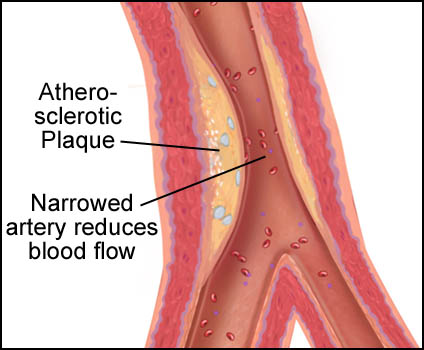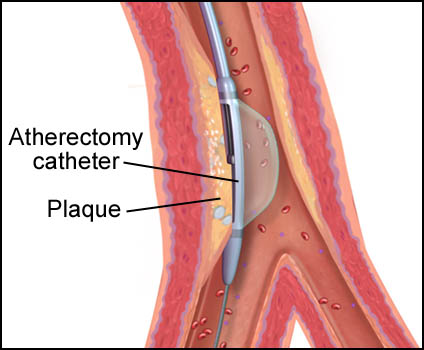
Peripheral Vascular Excisional Atherectomy
Peripheral vascular excisional atherectomy is a minimally invasive procedure that is used to remove plaque that has formed in the inner walls of an artery.
Peripheral vasculature refers to blood vessels (arteries and veins) that are located outside the heart and brain. Normally, blood flows freely through the blood vessels. Atherosclerosis is a disease that causes fatty material called plaque to build up inside the walls of arteries. This plaque can narrow arteries and reduce blood flow. Plaque also has a risk of rupturing into the blood stream and causing dangerous blood clots.
To begin an excisional atherectomy procedure, a thin guide wire is inserted into a small incision in the arm or upper thigh. This process is usually visualized using x-rays and a special dye that helps reveal the arteries (called angiography). This guide wire is carefully guided through the blood vessels until it reaches the narrowed artery. Then a thin tube called a catheter is inserted over the guide wire. The catheter is activated, turning on a small rotational blade. The blade cuts away plaque as the catheter is passed over the plaque. The plaque is removed from the body through the catheter. Blood flow is then restored through the blood vessel. The catheter and guide wire are removed following the procedure.
Visit Ohio Heart and Vascular Center for more information.



